Key takeaways:
- Selective mutism is a complex anxiety disorder, not simply defiance or shyness; understanding it requires empathy and a commitment to communication.
- Communication toolkits empower children to express themselves through visual aids, gesture cards, and social stories, helping to alleviate anxiety.
- Personal experiences with tools demonstrate significant breakthroughs in children’s ability to communicate, highlighting the importance of patience and familiar engagement.
- Sharing communication strategies with others can create impactful change, fostering supportive environments for children with selective mutism.
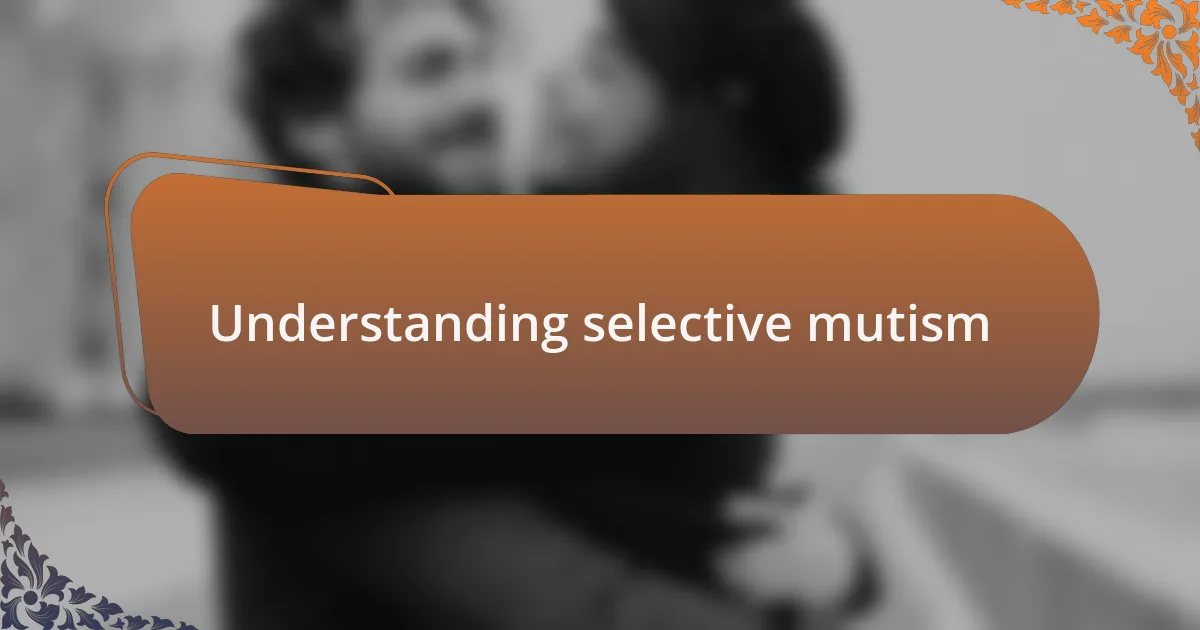
Understanding selective mutism
Selective mutism is more than just a reluctance to speak; it’s a complex anxiety disorder that affects many children. I recall meeting a young girl at a workshop who only spoke to her mother but would smile and engage with her peers through gestures. It made me wonder, how many children experience similar struggles, silently yearning to communicate but feeling trapped by their anxiety?
When I first learned about selective mutism, I was surprised by how often it can be misunderstood. Many see it as defiance or shyness, but it’s crucial to recognize that children are not choosing to remain silent. I remember a moment when a child finally expressed herself through art, and it struck me that sometimes words aren’t enough. Isn’t it powerful how emotions can find their voice in unexpected ways?
The journey for families dealing with selective mutism can be challenging and emotional. I’ve seen parents feel helpless, wishing for their child to open up but not knowing how to foster communication. This raises an important question: How can we create safe spaces for these children to express themselves? Understanding selective mutism involves empathy, patience, and a commitment to uncover the voices hidden beneath the silence.
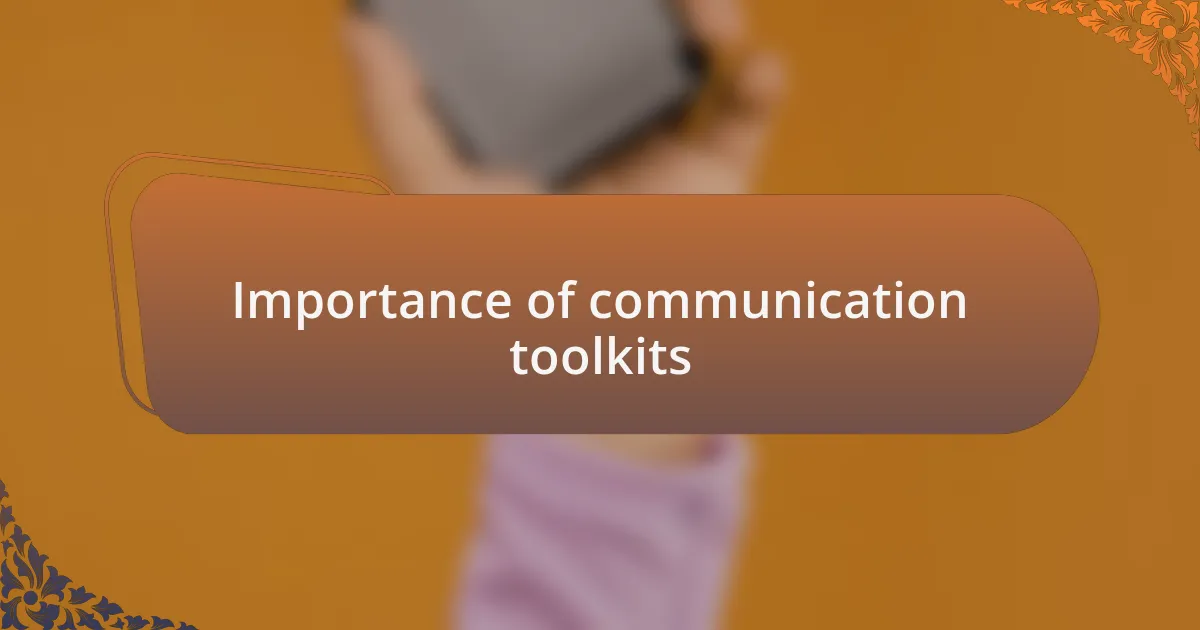
Importance of communication toolkits
One of the most significant reasons to have a communication toolkit is that it empowers children with selective mutism to express themselves in ways that feel safe and comfortable. I recall a workshop where we introduced simple tools like visual aids and gesture cards. One boy, who typically wouldn’t speak, lit up when he could point to pictures to convey his thoughts. Isn’t it remarkable how such simple mechanisms can open up a whole new world of communication?
Communication toolkits serve as bridges between silence and dialogue, fostering an environment where children can engage at their own pace. In my experience, I’ve seen children bloom when given the right tools—they no longer feel pressured to speak in traditional ways. What if every child had access to resources that let them shine in their unique way?
Having well-thought-out communication tools can also alleviate the anxiety that often accompanies selective mutism. I’ve witnessed parents transform their approach by integrating these resources into daily interactions. It’s like giving children permission to be heard without the weight of expectation. Isn’t that a beautiful reminder of the power of understanding and support?
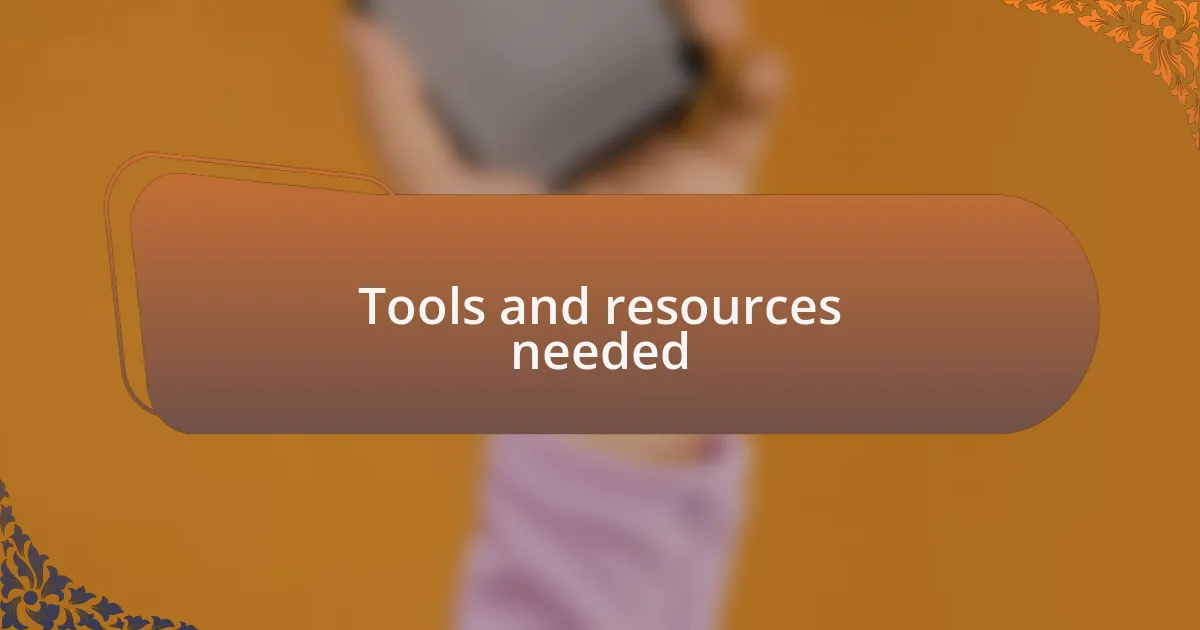
Tools and resources needed
To create an effective communication toolkit, I found that having a variety of visual aids is crucial. Picture cards, which can be easily customized to reflect a child’s daily experiences or interests, often become favorites in my practice. I remember introducing a set of emotion cards to a child who struggled to articulate feelings; it was heartwarming to see them use the cards to share how they felt for the first time.
In addition to visual aids, incorporating gesture cards can enhance non-verbal communication. When I worked with a timid student who was hesitant to speak, gesture cards proved to be a game-changer. They allowed him to express agreement or disagreement without verbalizing, creating a sense of agency. Have you ever noticed how a simple nod can convey so much? It’s astonishing how minimal support can lead to greater confidence.
Another resource I’ve found immensely beneficial is social stories. These short narratives can help familiarize children with different social situations, reducing anxiety around speaking. I crafted a social story about confidently asking for help in class for one child, and the transformation was evident. Suddenly, facing peers didn’t seem so daunting anymore. Isn’t it incredible how the right narrative can empower children to step beyond their comfort zones?
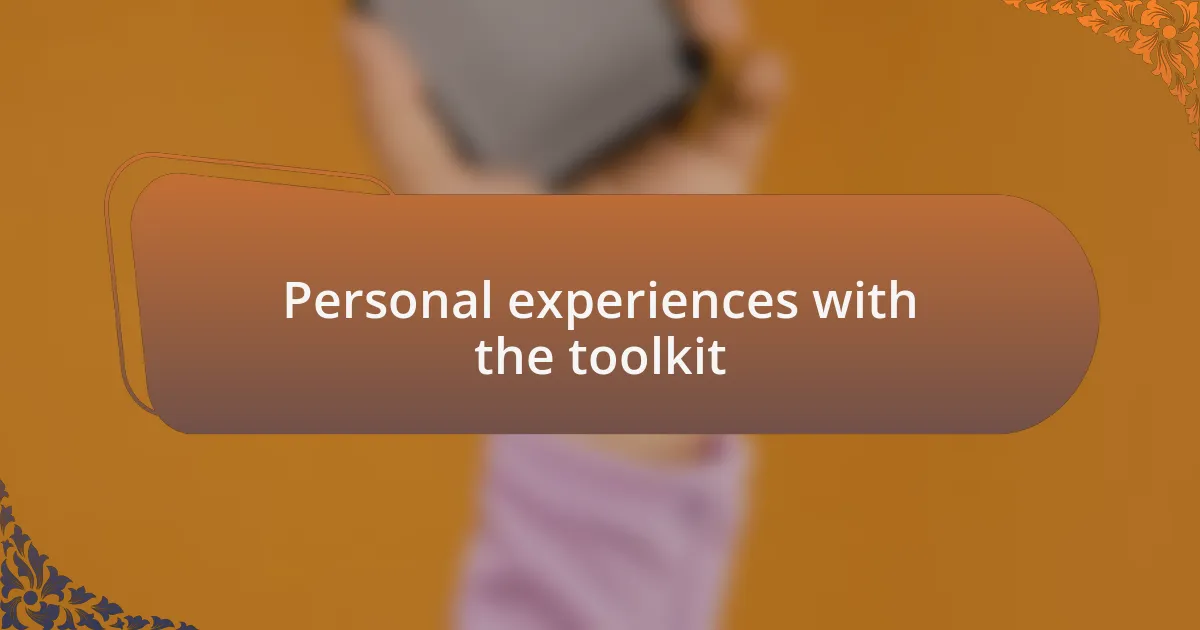
Personal experiences with the toolkit
When I first used the toolkit with a child named Sam, it felt like opening a door to a hidden world. Sam was typically silent in group settings, but as we began to utilize the visual aids, I witnessed a spark of curiosity in his eyes. One day, he pointed to a picture of a dog on a card and exclaimed, “Dog!” It was such a simple word, but the joy on his face was monumental. Can you imagine that moment of breakthrough?
Another powerful experience came when I introduced gesture cards to my student, Maya. Initially, she would sit quietly, avoiding any form of interaction. However, after a few sessions using the cards, I noticed a shift. One day, during group work, she raised her hand and gestured “yes” to join in a conversation. The pride radiating from her was palpable. Have you ever felt the thrill of witnessing someone carve out their voice in a world that often feels so loud?
Lastly, I created a social story about sharing at snack time, which was particularly challenging for a shy girl named Ella. At first, she looked overwhelmed, but after reading through the story together, she started to smile and gradually opened up. The next session, she confidently offered her cheese crackers to a classmate. It’s moments like these that remind me of the profound impact a personalized approach can have. Isn’t it amazing how stories can bridge the gap between silence and expression?
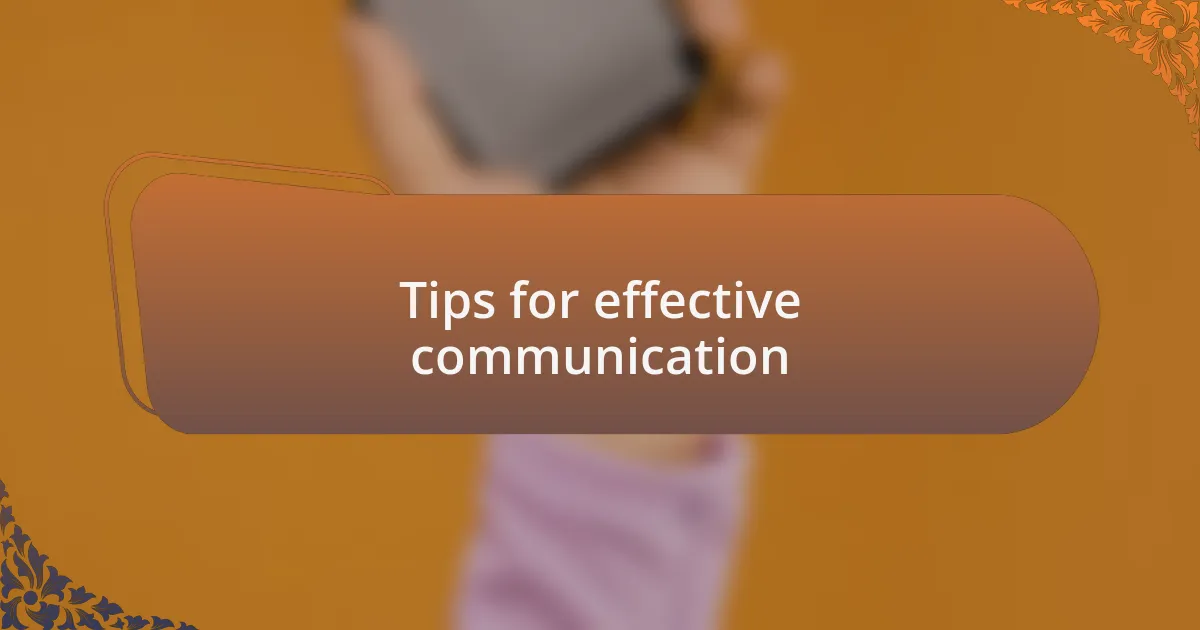
Tips for effective communication
As I navigated the journey of creating a communication toolkit, one key tip I discovered was the importance of patience. I vividly recall a session with a child named Leo, who seemed to struggle endlessly with speaking up. Instead of rushing him, I learned to embrace the silence. I often asked open-ended questions and allowed ample time for him to respond. This patience empowered Leo to take his time, transforming those quiet moments into opportunities for him to gather his thoughts.
Another effective strategy I found was to incorporate familiarity into our interactions. When I introduced activities that revolved around Leo’s favorite cartoon characters, I noticed him lighting up. One day, as we played a role-playing game based on the show, he took on the character with ease. This kind of engagement not only made communication more meaningful but also fostered a safe space where he felt comfortable expressing himself. Have you considered how connecting interests can enhance communication?
Lastly, the power of non-verbal cues cannot be underestimated. I remember another child, Mia, who found solace in using facial expressions and simple thumbs-up gestures to communicate her feelings. One day, during a particularly challenging group project, she vividly expressed her excitement with a huge smile. It reminded me that communication extends beyond words; it can be full of emotion and meaning. How often do we overlook the nuances of non-verbal communication in our daily interactions?
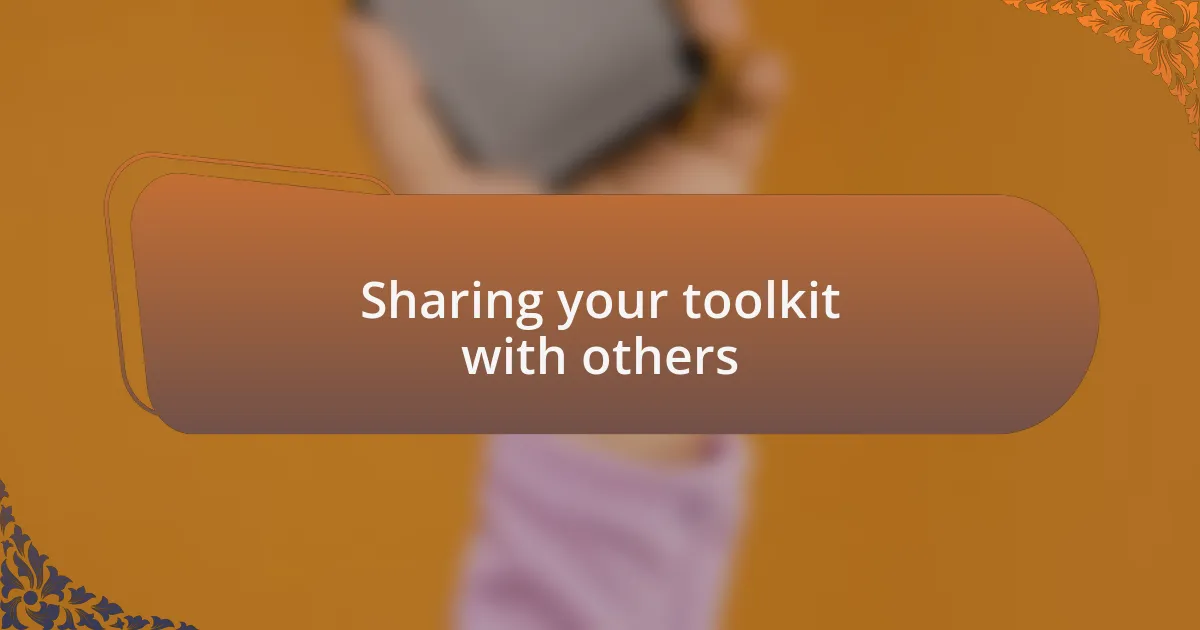
Sharing your toolkit with others
Sharing your communication toolkit with others can be a game changer in fostering supportive environments. I remember when I hosted a small workshop for parents in my community. I shared my toolkit, and the look of relief on their faces was palpable; they were eager to learn how to support their children better. Have you ever witnessed the power of shared knowledge transform a group dynamic?
One of my favorite moments was when a mother, overwhelmed with her child’s selective mutism, started using the same strategies I presented. Weeks later, she called to share how her child bravely spoke in front of a small group for the first time. Hearing that brought a wave of joy; it was a powerful reminder that by sharing, we create ripples of positive change. Have you thought about the impact your own experiences could have on someone else?
It’s essential to make this toolkit accessible. Consider creating printed copies or a digital version to distribute easily among friends, teachers, and caregivers. I found that when I provided visuals and practical examples, those around me felt more empowered and confident to implement the strategies. How rewarding it is to know that our journeys can inspire others on similar paths!